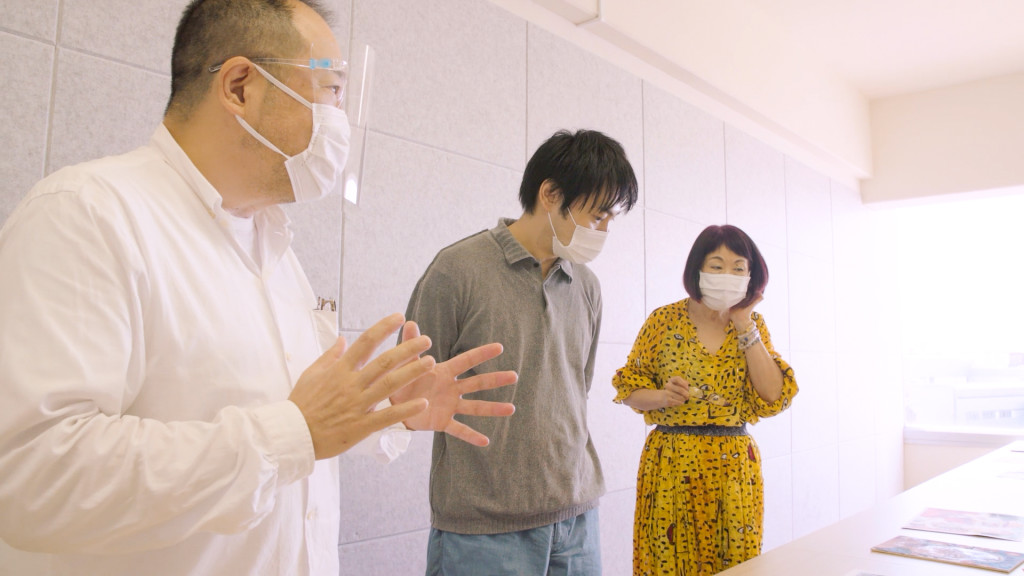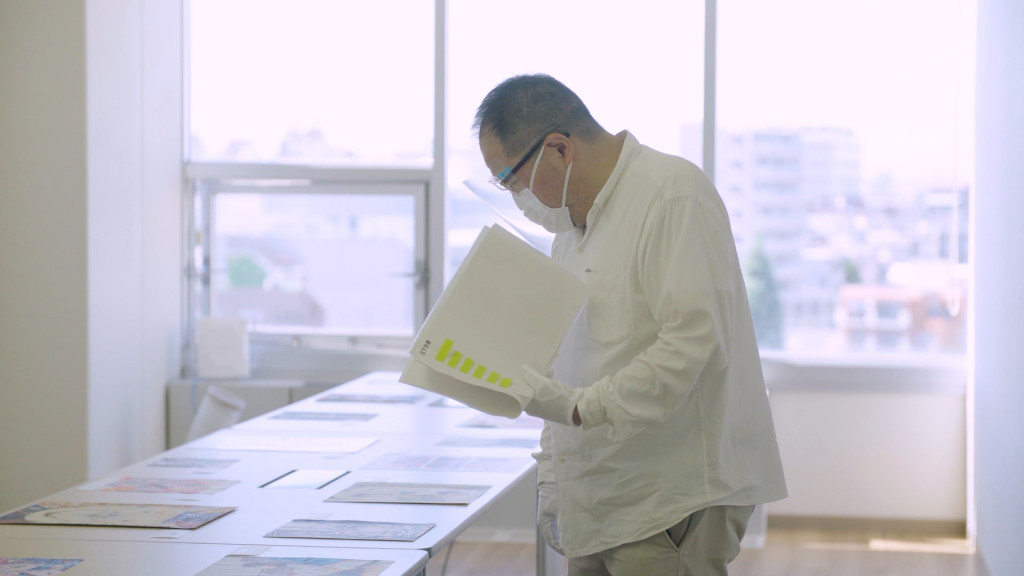【Interview】COPIC AWARD 2020 Judges: Kei Matsushita
The fifth interview is with Mr. Kei Matsushita, who served as a judge member for 2020 as well as the previous year.
Having served on the judge for two years in a row, he shared his ideas with us about a comparison of the tendency of the entry works in 2020 and 2019 and his opinions on COPIC AWARD as a whole.
Click here for the previous interview: 【Interview】COPIC AWARD 2019 Judges: Arina Tanemura, Kei Matsushita, and Tsutomu Okada | COPIC AWARD 2021 OFFICIAL WEB SITE
Interview with Kei Matsushita

|
Kei Matsushita(website) Matsushita graduated in general design from Tokyo National University of Fine Arts and Music in 1985 and then, in 1987, completed his postgraduate studies. Matsushita was also awarded with prizes including the JAGDA New Designer Award, the TOKYO ADC Awards, the Education Minister’s Award and the Good Design Award.。 |

Q: What are your thoughts after today's final judging round?
I was also on the judging panel last year, and I was a bit surprised to see that the quality of the submitted entries is much higher than last year. All of the pieces that were nominated are of high quality and would be worthy to be in any art competition.
Q: Could you be more specific about the level of improvement?
I think there were more entries from professional artists. I expected that many of the participants are people who draw quite often. I didn't notice it when I was checking over 4300 pieces, but after looking only at the nominated entries, I got the impression that there were a lot of professionals.
Q: What criteria did you use to choose the nominations in the first round of judging?
I tried not to be biased in one direction, but it was quite a difficult task to choose 10 pieces from the finalists. Even if I made up my own criteria, that criteria will waver while I evaluate all the artworks. So to keep things fair as possible, I took 3 to 4 days to evaluate the entries. I had to look at thumbnails on a small computer screen, but today after looking at pieces in person, I noticed the drawings are meticulously drawn with fine details. So it was a bit disappointing to know that these details were not as evident on a computer screen. I think a key point in the judging process was, each judge had to predict these details.
Q: How was it looking at the original drawings?
Since Copic products are easy to use and it makes us want to keep putting more and more additional touches, symbolic or minimalist artworks are not as common as they are in other competitions.
Many of the nominated entries are full of intricate details, and I think it attributable to a characteristic of Copic markers. Of course, the amount of detail does not always imply how a piece is evaluated, but that kind of way of evaluating art is one of the unique aspects of the COPIC AWARD.

Q: Please let us know your thoughts on the piece that you chose for the Judges' award.
This entry uses COVID-19 as its theme, so when you look back on this year, you'll remember that it was the year of the pandemic. I thought it was a symbolic piece. Also, while a lot of the entries use a linguistic (or I would say a bit of a "wordy") approach, I felt this piece is more poetic.
I personally found the emotional approach to be worthy of recognition.
Many participants have great skills, like avoiding mixing colors up or coloring without outlining first. They emphasized using proper Copic techniques. That was one of the trends right now, but I think it's okay to break away from the norm even more.
Unorthodox processes are interesting to see as well. The trends may be heading in a direction that emphasizes technique more, but I felt like there should be more disruptive, explosive, and experimental pieces.
Q: Please let us know your thoughts on the grand prize and 2nd place pieces.
Each one is a wonderful piece of work! If different evaluation criteria were applied, other entries could have been selected for the Grand Prize, but I thought the skill demonstrated in the winning piece was very sophisticated.
The entry we chose as the Grand Prize winner was the piece I found to be the most technically advanced. The colors were not mixed but used various blends of color with thought to spacing. When you look at it from a distance, you can see it is a complex piece. However, when you get a closer look, you will notice that each color stands out and is actually very well planned. This piece is technically great, and that's why we selected it. But to be honest, each of the pieces was really good!
Q: How do you feel after looking at the nominated works?
Some pieces portrayed a deeply personal worldview, rather than just showcasing their skills. I feel like there could have been more conceptual pieces.
Many artists draw on vertical canvases, but I guess Copic is suitable for drawing horizontally on paper (like a tabletop). When you use Copic, the artwork itself tends to depend more on the direction of the drawing surface. The artistic tendencies and drawing style when using Copic markers as a drawing tool are evident in the entries, but I think if the artist could change their point of view, the scope of their art would expand. I want Copic artists to try looking at the work from a distance, looking down, changing the direction of the paper, and so on.
I think most Copic artists probably draw on flat desks now. However, if that environment changes and drawing space itself expands, I think their artistic perspective may change.
Q: Please leave a message to those who were unfortunately not nominated.
Another characteristic of COPIC AWARD is that there are no themes. Since you can draw anything you want, all you need to do is find a theme and draw accordingly with that in mind.
For example, if you think of the whole process as a challenge to yourself to see if you can create a piece that fits your theme, I think your artwork will improve even more. Since there is no theme, participants are free to draw their artwork without any restrictions. That's one of the interesting aspects of the AWARD - I think artists should decide on a theme for themselves. If they can figure out why they are drawing a specific theme they chose, they may be able to extend the reach of their potential, and the quality of the artwork will improve.
Q: Please give us a few words regarding the next COPIC AWARD.
When you move towards the possibility of something, don't think there's nothing, always think there is something.
It's important not to think "this isn't going to work". Please think positively, like "maybe it's not a bad idea" and "maybe there's something there."
Even if your entry is not highly recognized, the fact that you have accomplished making your art never goes away and you can use that experience as a springboard to move forward. I really hope everyone continues to challenge themselves.

We appreciate Kei Matsushita taking the time to talk to us.






